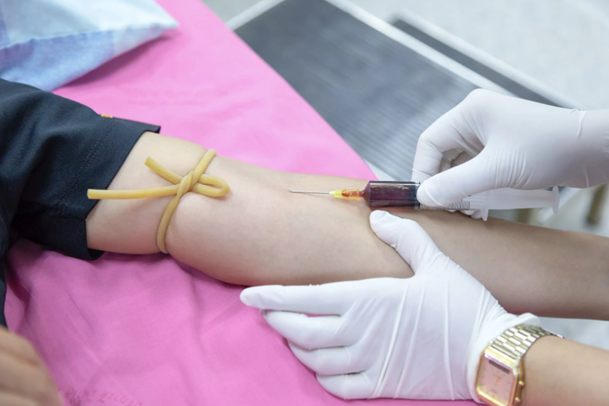
In recent years, Platelet Rich Plasma (PRP) has become popular among athletes to alleviate sport-related injuries. PRP injections are kept handy so that athletes can use them to recover quickly and go back to doing what they love the most – playing sports. PRP injections also reduce the risk of re-injury. Over the years, we have learned that PRP helps alleviate torn tendons and injured ligaments, hairline fractures, healing of a wound, and any sort of adhesion of bones or tissue grafts.
However, did you know that PRP therapy was first used in open-heart surgery? Moreover, this treatment was first developed by dentists to aid in oral care. Fifty years later, the most renowned cardiac surgeons who perform top-notch heart procedures continue to make use of PRP therapy as part of their cardiac practice.
According to the American Academy of Cardiac Perfusion (AACP), doctors performing heart procedures, including artery bypass and the replacement of valves, struggle to ensure that their patients are healing. These procedures have high risks of uncontrolled bleeding, as well as deadly infections. This is mainly because, during surgery, some platelets become weak. Blood transfusions and platelets that are taken from donated blood come in handy during this time.
What is PRP?
The blood is made from a protein-loaded, salty liquid commonly known as plasma. There are different kinds of solid components in the blood, such as red blood cells, white blood cells, and platelets.
The function of the red blood cells is to help oxygen from the lungs reach the organs and tissues in the body. White blood cells are seen as warriors as they protect the immune system by warding off infection and fighting invaders. When you get hurt, wounded, or injured, platelets are drawn by the body to clot blood so that the healing process can begin.
There are a number of growth factors that are a part of platelets. These fasten the healing of wounds and include platelet-driven growth factors and insulin-like growth factors.
How PRP Therapy Works
When PRP is prepared from a patient’s blood, a platelet-concentrated form of plasma is created, which is injected into the body part that contains the injury. The platelets are five times more concentrated, making them super dense. This helps kick start the process of healing so that your body can work on the injury and restore the function of that particular body part.
Even though PRP is a cutting-edge, revolutionary, and innovative therapy, the procedure is not complicated at all. In fact, it is simple enough to perform. When you book a session for PRP therapy, the doctor will first remove some of your blood using a syringe. The blood will then be placed in a centrifuge so that the platelets can be separated from the rest of the blood. Once the solids and plasma are separated, only the platelets will be left behind.
Once the doctor is left with a high concentration of platelets, a tiny amount of plasma will be mixed with it. This mixture will then be injected into your body, specifically where you are injured. Even though this sounds like a lengthy procedure, due to innovative and modern technology, this process takes less than an hour. Based on the level of your impaired mobility or how deep your injury is, you may need a number of PRP therapy sessions over time.
PRP Therapy and Cardiac Surgery
As PRP therapy was discovered and researched, doctors found out that platelets could be used from the patient’s very own blood. This would help heal the surgical incision quickly and more efficiently, lowering the likelihood of infections, like Deep Sternal Wound Infections (DSWI) – a life-threatening complication.
Even though the developments in surgical debridement, antibiotic irrigation, flap closure, and modern VAC therapy have helped improve DSWI-based mortality in the past 30 years, there is no change in the implications of sternal wound complications. This can be changed because of PRP therapy. Studies show that there are improvements in median sternotomy because of the growth factors released by PRP. Activated platelets encourage growth factors during the inflammatory period of tissue healing.
Moreover, PRP therapy also helps reduce the risk of the patient’s body rejecting a foreign transfusion, increasing chances of cure. PRP could be used in the same place where the vein for the bypass procedure was harvested.
According to research produced by the National Center for Biotechnology, PRP is also being used during heart transmissions as cardiac surgeons continue to rely on its effectiveness. The serum is being added when inserting devices to boost heart function, such as Ventricular Assist Devices (VAD).
PRP therapy in cardiac surgery has helped heart surgeons reduce the likelihood of DSQI from 2 percent to 0.6 percent and sternal infection from 8 percent to 2 percent. Patients are not readmitted as often since there are barely any complications after their surgeries. Moreover, since there are fewer infections from surgeries to treat, costs have also gone down from $1,256,960 to $593,791- a staggering difference. This means that not only does PRP therapy help heart patients recover faster with fewer risks, but it also reduces the cost of post-operative cardiac care.
Injuries that PRP Can Help With
Apart from cardiac surgery, PRP therapy is a wonderful way to heal other ailments that increase pain in the human body. Here are some other injuries that can be treated successfully with PRP therapy:
- Osteoarthritis of joints, such as the knee, shoulder, hip, and spine
- Rotator cuff strains and tears
- Anterior Cruciate Ligament (ACL) injuries
- Pelvic pain and instability
- Back and neck injuries or chronic pain
- Tendinosis (Tennis Elbow)
- Tendinosis and ligament sprains
- Chronic knee pain (arthritis or injury)
- Muscle pulls and strains
PRP therapy helps strengthen tissues that have become weak with injury and age, hence boosting joint and muscle functions and reducing pain and discomfort in the body.